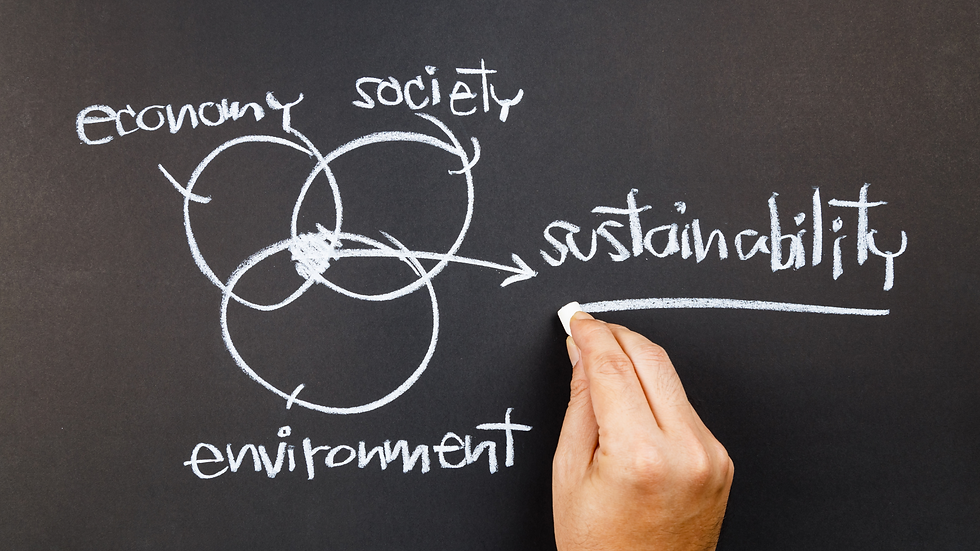Industry trends and design trends
- 鄭季顓

- 2021年1月25日
- 讀畢需時 4 分鐘
Author: Lu-Ching Chu (朱魯青) | Editor: Jack Cheng
Industrial design and theory dominate the trends of human life, market and economy. This article will discuss the context and reflections of industrial design since the industrial revolution to the coming year of 2030, as well as a glimpse of the direction of the future industry.

The evolution and promotion of domestic industrial design is generally confined to the "applied art", "Plastic Art", " Art of Crafts". Even in the direction of the country's economic development, it is still narrowly called "Cultural Creativity Industry", "Art of Craft Economy", but in fact it does not contribute much to the economy.
The design thinking and context of industrial design in the advanced countries, I will briefly list it later to provide reference and advice for dearly friends who are concerned about the country's economic development and are enthusiastic about the value of industrial design and innovation.

The first industrial revolution(1760 to 1840): Also known as the Industrial Revolution, the Machine Age; replacing manual production with large-scale, standardized industrial manufacturing processes. The original form of craftsmanship was eliminated because of its over-decoration and not easy to mass produce characteristics.
The industrial design at this time emphasized the "Form Follow Function" feature of the product appearance, aiming to be simple and clear.

The second industrial revolution(1870 to 1914): After the industrial economy moves towards electromechanical and petroleum energy, products tend to be composed of complex multi-functional technical components. The diversification of consumers has resulted in the complexity of the application requirements of products, and thus has produced a "systematic design method" that deals with this multi-element and multi-factor composition: Form Follow Functional Requirements.
For example, the design of a car must consider the driver and passengers, sales, after-sales service, and the traffic environment during its use, and even the maintenance and repair operations, the repair factory and other equipment and occasions. The design demand is by no means only a pursuit of aesthetic issues, but seeking common ground in complexity.
The third industrial revolution (1946 to 2000): It happened in the era of high utilization of computer technology. Due to the miniaturization of wafers and digital components, products and their structures have changed into non-specific shapes. The design of industrial products at this time was then translated into Semantic and pursues metaphysical principles, becoming "Form Follow Expression".

The fourth industrial revolution (2016 to 2030): this is what we are today: digital fast computing (AI, cloud computing, big data), high-speed transmission (5G, GPS, Internet, IoTs), and the 4.0 generation of technology integrating virtual and real.
In this era, commercial and product design focuses on human wisdom and industrial design to meet the needs of human life and survival on the earth. Industrial design will be human-centered, relying on the concept of "interconnection, co-creation, cooperation, and sharing" to integrate product and service systems (virtual and real integration) to create an industrial design thinking mode of "user context experience-oriented cross-domain collaborative innovation" .

According to a treaty made by the United Nations in 2016, the year of 2030 is the "Sustainable Development Goals" (Sustainable Development Goals) for the design and development of human beings and the living things on the earth and the earth environment.

The application and promotion of industrial design and concepts in the developed countries around the world have expanded from product innovation, through service innovation (industrial outsourcing and expansion of medical, education, and government-to-private services) to Social Innovation.
The application of contemporary innovation focuses on cross-domain groups that combine multiple issues: we should apply industrial design concepts, perceive socio-economic impacts and macro-trends (Scenery), and design with human-oriented demand scenarios (Scenario). This must be achieved through diversified innovative design concepts, which cannot be achieved by traditional industrial design in applied aesthetics (Styling) alone.
Our government, enterprises, and industrial designers must seriously think about and study how to lead policies and industries to design trend-leading products and create economic advantages together.

Note:
Lu-Ching Chu was born in Qingdao, China in 1947. He was the first batch of 12 students selected by the National Taiwan University of Arts in 1965. He later became a college student in the experimental class of Industrial Design Thought "Industrial Design" in Bahaus, Germany. Lu-Ching Chu was the only student majoring in "Watch Design" at the time.
This experience has trained Lu-Ching Chu's precise thinking and microscopic skills. Lu-Ching Chu's experience in industrial design has a huge impact on his future landscape design and artistic creation.

At the age of 20, Lu-Ching Chu had the opportunity to study for a master's degree in watch design in Switzerland. After gathering for fate, he went to Japan in 1973 to study garden landscape and amusement park design. In 1979, he went to the United States to study landscape design and landscape art, becoming the first outstanding Chinese landscape artist.
Since 1982, he has taught landscape art and brand practice courses in various universities. In 1988, he founded Ling Tung University's Visual Communication Design Department. When he reached the peak of his career, he went to Australia with a "return to zero" mentality in 1996, and then traveled to Europe, The United Kingdom and the United States, professing to be global citizens, have studied diversified artistic innovation and artistic philosophy, and focused on pure artistic creation of "oil painting and sculpture". He then owned a private art museum at the center of Calligraphy Greenway in Taichung (草悟道).





留言